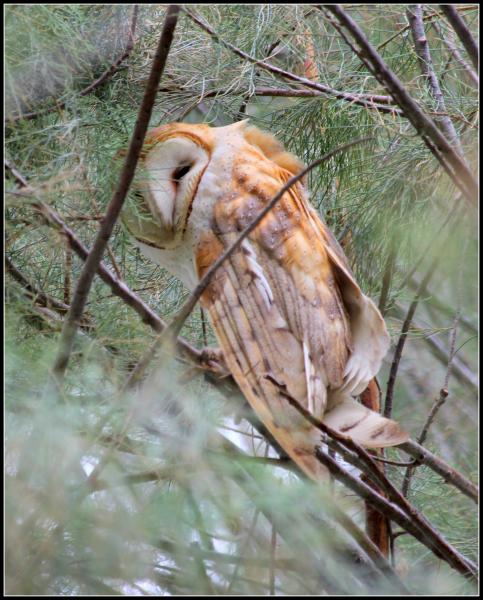Birds of the Sierra Nevada
Dates: June 13-18, 2025
Instructor: Dave Shuford
Fee: $500.00 + meals and accommodations fees
Term: Summer 2025
Workshop Description
This introductory level field biology course will focus on the identification, natural history, ecology, seasonal cycles and adaptations of nesting birds of the northern Sierra Nevada (See SNFC bird checklist). We will also discuss the factors controlling the local distribution of birds with respect to the major life zones and habitats of the region, annual variability, and how climate change may affect birds in the future. In addition to broadly surveying the avian ecology of the area, we will also focus on selected species of special interest. Students will be encouraged to keep field notes of their observations.
The Yuba Pass/Sierra Valley area is ideally suited to comparative bird study. Within a short distance of the field campus, habitats range from a variety of conifer forests, to alpine fell-fields, to Great Basin Desert communities. The Sierra Valley marsh, one of northeastern California's largest and most productive wetlands, is a particularly impressive area for nesting birds. Here Sandhill Cranes reach their southern breeding distribution in California, amid myriads of nesting Yellow-headed Blackbirds, Wilson's Phalaropes, American Bitterns, Northern Harriers, and a host of ducks and other marsh-birds.

Instructor Bio
Dave Shuford is a retired ornithologist who combines an avid interest in natural history with his enthusiasm for teaching and research and awe at the beauty and mystery of the natural world. Although Dave's fieldwork has taken him from the Arctic tundra to the Antarctic ice cap, his primary interests are the distribution, abundance, habitat needs, and conservation of California's varied birdlife. Dave has studied the ecology of California Gulls at Mono Lake, conducted breeding bird atlases in Marin County and the Glass Mountain area near Mono Lake, and surveyed shorebird populations and breeding colonial waterbirds throughout California and the West, with an emphasis on birds' responses to environmental variation and human alteration of the landscape. Dave may be contacted for further questions wdshuford@gmail.com
Workshop Details
Workshop Schedule
Plan to arrive at the Sierra Nevada Field Campus on Friday evening. We can get acquainted that evening after dinner, but the class will begin at 7:30 a.m. on Saturday. Each day we will generally spend the morning in the field, have an afternoon break, and return to the field in the late afternoon. Lectures and discussions will be held informally in the field or in the evening. Plan on one to two evenings in the field for owls and marsh-birds. The class will end on Wednesday afternoon.
Workshop Supplies List
Field gear:
- binoculars (a must)
- spotting scope (optional)
- field guides
- notebook
Suggested reading:
- Birds of the Sierra Nevada: Their Natural History, Status, and Distribution. Edward C. Beedy and Edward R. Pandolfino. 2013. Univ. of Calif. Press, Berkeley. Comprehensive overview of birdlife in the Sierra Nevada; generously illustrated by Keith Hansen.
- Sierra Nevada Birds. David Lukas. 2011. Lukas Guides, Big Oak Flat, CA. Complementary to the book above.
- Birds of Yosemite and the East Slope. David Gaines.1988 (revised 1992). Artemisia Press, Lee Vining, CA. An important distributional book on the most complex region of the Sierra by one of the state's greatest naturalists; strong on habitat preferences, seasonal cycles, and vivid prose.
- Birds of the Pacific States. Ralph Hoffman. 1927. Houghton Mifflin, Boston. Classic field guide that emphasizes birds in their natural settings with compelling prose; illustrations by Allan Brooks. Long out of print, but can be found online fairly easily.
- Sierra Nevada Natural History. Tracey. I. Storer, Robert L. Usinger, David Lukas. 2004 (2nd edition). Univ. of Calif. Press, Berkeley. The classic book on all aspects of the natural history of the Range of Light.
- The Laws Field Guide to the Sierra Nevada. John Muir Laws. 2007. Heyday Books, Berkeley. The compact, well-illustrated go-to guide for identifying all the common insects, vertebrates, and plants of the Sierra Nevada.
- Hansen's Field Guide to the Birds of the Sierra Nevada. 2021. Keith Hansen, Edward C. Beedy, and Adam Donkin. Heyday in conjunction with Sierra College Press. A must-have field guide to Sierran birds.
Lodging and Camping Supplies
Camping gear if you are staying on campus:
- tent and sleeping pad (unless you are staying in our tent with a cot provided)
- warm sleeping bag
- pillow, toiletries, and towel
- flashlight and lantern
- alarm clock
Field gear for everyone:
- day pack
- sunscreen
- insect repellant
- water bottles
- plastic containers for packed lunches
- sense of humor
You might also want to bring:
- camera
- binoculars
- hand lens
- camp chair
Clothing:
The weather in the Sierra Nevada can vary greatly, even in a single day. Be prepared for chilly temperatures at night, even below freezing early in the summer. Rain is a possibility any time, whether forecast or not. Variable weather clothing that can be layered is best: long pants and a long-sleeved shirt, warm sweater and jacket, t-shirt and shorts or skirt, sturdy shoes or hiking boots, sun hat, rain gear, and a warm hat or gloves for cold weather and/or night activities. And, if you come later in the season, bring your swimsuit for afternoon dips in the lakes!